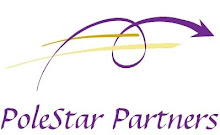Book publishers list the official retail prices of their e-books the same as their newly-published hardcovers (for example, $25.95 for The Girl Who Played with Fire by Stieg Larsson). Retailers pay roughly 50% of the retail price for their books (the actual discount varies based on volume and other factors). While Amazon and Barnes & Noble compete to offer lower prices on the hardcovers (now $14.27 to $16.86 for Larsson's book), they don't lose money on them. With e-books, they take a different tack: the price is $9.99 at both Amazon and B&N, meaning that they lose money on every sale. (That's only $2 more than the list price on the mass-market paperback, which won't be published until March 2010.)
In effect, Amazon and B&N are turning an old marketing ploy on its head -- they are giving away the blades to try to sell more razors.
While publishers collect the same wholesale price regardless of the ultimate retail selling price of the e-books, they are not happy about the e-book pricing. For decades, books have appeared first in hardcover, followed many months later by a cheaper paperback. If you want the book immediately, buy the expensive hardcover; if you can wait, buy the cheaper paperback. With Amazon and B&N e-book pricing, it is now possible to buy a brand-new book at nearly the paperback price.
The publishers' concerns are two-fold: (a) the $9.99 price will devalue books in the eyes of consumers, and (b) at some point Amazon and B&N will tire of losing money on e-books, and will then pressure the publishers to reduce the "official" retail prices on them to the price consumers have come to expect.
There is a reasonable argument to be made that the price of an e-book should be somewhat lower than the paper book, because there are no manufacturing or distribution costs. On the other hand, the consumer is still buying the ability to read the book, regardless of the format. Some have argued that the paper versions remain much easier to read, with crisper type and higher contrast; others point to the convenience and lightness of the e-book reader device. On the whole, there may be balance here.
I suspect that publishers would not be averse to a small reduction in the price of e-books, perhaps in the range of $2-$5 off the retail price of the hardcover. However, this would also cut into the royalties payable to the author of the book -- author royalties are typically a percentage of the retail price-point.
From the book-buyers' point-of-view, the publisher and the retailer are middlemen, standing between the reader and the author. Perhaps if the savings in "manufacturing" e-books could lead to an increase in author royalties, then book-buyers would be more amenable to the limitations inherent in the e-book format?
Note of Interest: The movie studios are facing a somewhat similar problem now, as several of them are refusing to provide DVDs to Redbox, which offers $1 DVD rentals from its vending machines. The studios are concerned that the $1 price would devalue the movie in consumers' eyes. 20th Century Fox, for example, is proposing a delay of 30 days after a movie's release on DVD before it would be available for Redbox $1 rentals.
skip to main |
skip to sidebar
Musings about the money behind-the-scenes
Blog Archive
About Me
Copyright © 2009 PoleStar Partners
